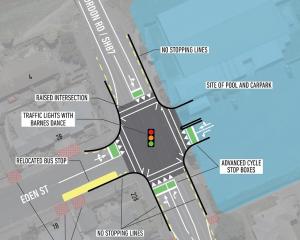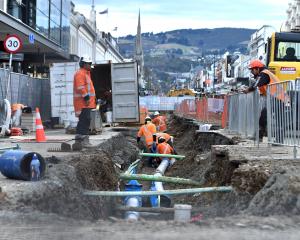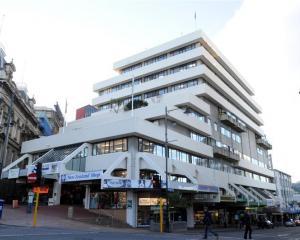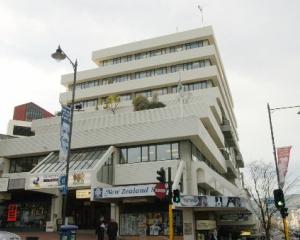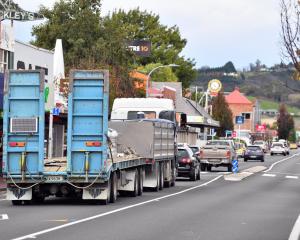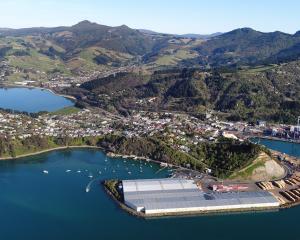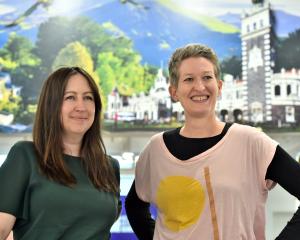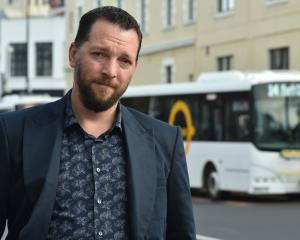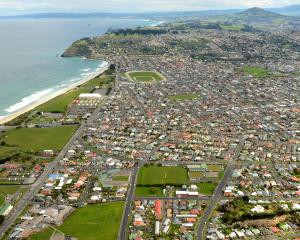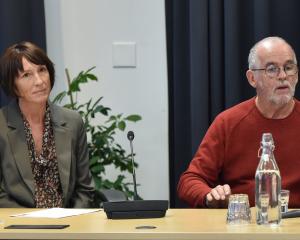Dunedin City Council critic Calvin Oaten says the city should turn all its attention to saving itself from bankruptcy rather than spending time, money and resources chasing "spatial plan" rainbows.
"A 'special' Dunedin is seen in new plan." So said the headlines covering the presentation of the council's draft "spatial plan" to about 100 people at a public forum at Forsyth Barr Stadium recently.
So what is this plan? "Dunedin Towards 2050 - a Spatial Plan for Dunedin", sets the strategic direction for Dunedin's growth and development for the next 30-plus years.
It outlines a broad set of principles, strategic directions, policies and actions, and visually illustrates how the city may develop in the future. So says Mayor Dave Cull.
Has he forgotten that we already have a plan halfway through a 20-year outlook? This was promulgated in 2001 and presented as "CHOICES For The Future. Towards 2021". In a joint forward by mayor Sukhi Turner and freshly minted chief executive Jim Harland, they said, "We all want the best for Dunedin.
It's such a great place to be! The strategic plan is important. It will set out Dunedin's chosen strategic direction for the next 20 years, guiding our actions and investment decisions."
It was fronted by Mrs Turner, Mr Harland, council senior manager Graham Spargo and economic and development committee chairman Malcolm Farry.
When I queried some of the claims made by Mr Farry, I received a letter dated May 21, 2003, unambiguously claiming that its target was to "create 2000 new jobs by year 2005 and a further 4000 by 2010. These 6000 positions added to the present 40,906 FTEs [full-time-equivalent employees] will give a total workforce of 46,906 by 2010."
The base figures came from Statistics New Zealand, which, he assured me, constantly re-evaluated its employment data at the end of each year. Strange, because in the spatial plan it is claimed in 2010, Dunedin had created almost 50,000 FTEs compared with 10 years earlier of about 42,000 FTEs. In the same breath it admitted 1090 FTEs were lost in the manufacturing sector.
All this tends to add credence to the adage: "there are lies, damned lies and statistics". This is exemplified by the fact that in the last 10 years we have lost Mainland Products, CottonSoft, Tamahine Knitwear, Wickliffe Press, Burnside Venison Processors, Fisher & Paykel and seen Cadbury replacing staff with technology, plus Hillside redundancies.
It is pertinent to note that all these companies enjoyed incentives from the DCC by way of rate remissions and/or favourable finance for plant/building extensions, or just plain payments.
The losses are proof positive that businesses are governed by their own commercial imperatives, not by the wishes or whims of the DCC.
Arguably, the most egregious aspect which has driven the plan off course is the fact that Mr Harland, mayor Peter Chin and the council went on a spending spree of unprecedented proportions, commencing in 2004, taking Dunedin's net debt from $35 million in 2002 to $457.790 million in 2013.
Of that, at least $270 million is invested in what can only be described as non-performing projects, namely, the stadium, the town hall/ conference centre and the Otago Settlers Museum.
This is because each of these show revenue projections over operating expenses as deficits. The whole $270 million, of course, would require just on $19 million a year just to cover interest, never mind maintenance, depreciation and debt repayment.
This probably explains why it is shown in the annual plan that it will, over four years, capitalise some $28.13 million. One would only assume that this is because we are unable to pay it.
The town hall shows in its projections that even if the 36 conferences per year (up from 16 in 2008) are achieved, a deficit of $4.2 million will be the result.
The Otago Settlers Museum, with some $40 million of this debt, will only have gate takings to cover all outgoings.
So where can the money come from? Well, Dunedin City Holdings Ltd is fully committed to supply the budgeted $17.95 million of interest and dividend to the council plus a $5 million dividend to DVL (the stadium debt-holding company) for its debt reduction.
DCHL has its own debt to contend with, having borrowed over the years to satisfy the DCC's voracious appetite. It has also made some doubtful investments in "land banks" in Queenstown and Luggate, plus a high-risk "punt" buying shares in IT start-up "The Street".
This has precipitated the dumping of the "coterie" of directors. But the replacements are not magicians. This only leaves the ratepayers, and we have already been forewarned of an 11.9% increase in next year's annual plan.
That will only be the start, as the commitments have been made and the bills must be paid.
To me, it seems that spending the time, money and resources in pursuing the spatial plan's rainbows 30 years out should be put firmly on the back burner while Mayor Cull, chief executive Paul Orders and the council turn all their attention to saving Dunedin from bankruptcy in the here and now.
• Submissions on the draft spatial plan have been extended until January 13 next year.


